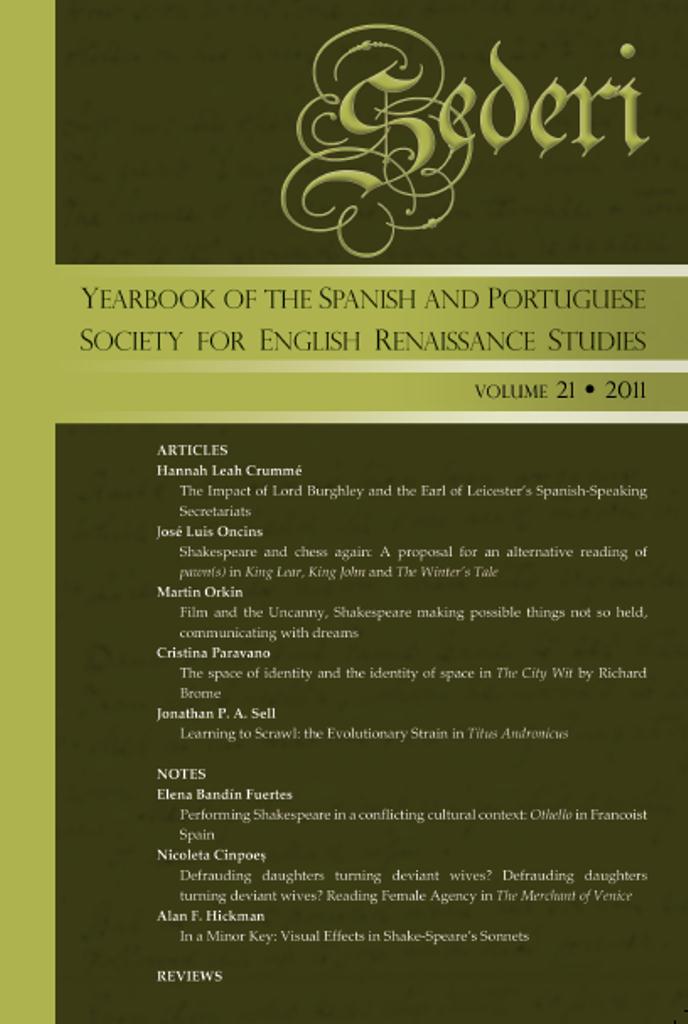Shakespeare and Chess Again: A Proposal for an Alternative Reading of pawn(s) in King Lear, King John and The Winter’s Tale
Keywords:
Shakespeare’s style, chess, metaphor, wordplay, punAbstract
For the last three centuries, Shakespeare’s plays have been continuously glossed, commented on and annotated. However, there still remain quite a few obscure passages and complex words which continue to puzzle and cause debate as to their precise meanings. One such word is pawn, glossed as a pun in some editions of King Lear, and passed over in silence in other plays where it appears in similar contexts.
This essay proposes an alternative reading of the word in King Lear, King John and The Winter’s Tale. The hypothesis put forward is that Shakespeare was indeed hinting at the various senses of this word and exploiting its punning potential in these three plays. This suggestion is supported by a series of examples of similar rhetorical exploitation of this polysemic word as found in several contemporary authors. These examples will demonstrate that the various senses of the word were indeed very much alive in Elizabethan England – and quite probably in Shakespeare’s mind.
Downloads
Downloads
Published
Issue
Section
License
The copyright holder of the published contributions is SEDERI.The hardcopy and an open-access version of the journal will be published simultaneously. The issues will be available online in the SEDERI website (http://www.sederi.org/yearbook/) and other repositories that have signed an agreement with SEDERI.
The authors who publish with this journal agree to the following terms:
a) SEDERI retains copyright of the essay.
b) If the author wishes to republish or rewrite the essay for another journal, or include the essay published in SEDERI in their personal repositories, or in any other way, they should contact the editors to obtain permission to do so. This will entail citing SEDERI as the original source and sending the editors a copy of the new version, or the link to the website, in case of online publishing.
The author(s) hereby warrant(s) that:
a) The essay submitted for publication is an original creation and does not infringe any copyright or property right of another journal, author or publisher.
b) The essay submitted for publication has not been previously published, whole or in part, and is not being considered for publication elsewhere.
c) Written permission has been obtained for any material from other sources included in the essay submitted for publication.




